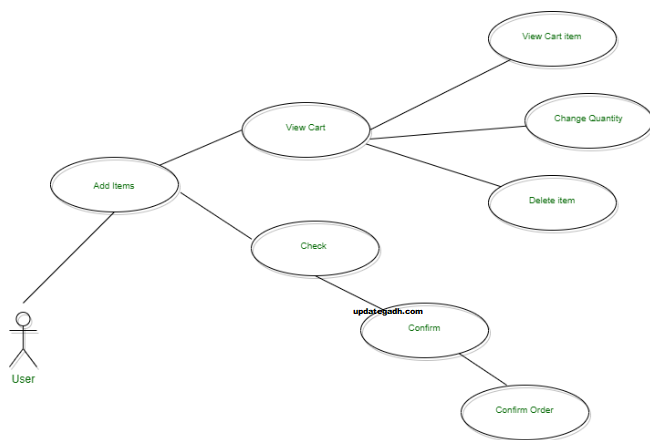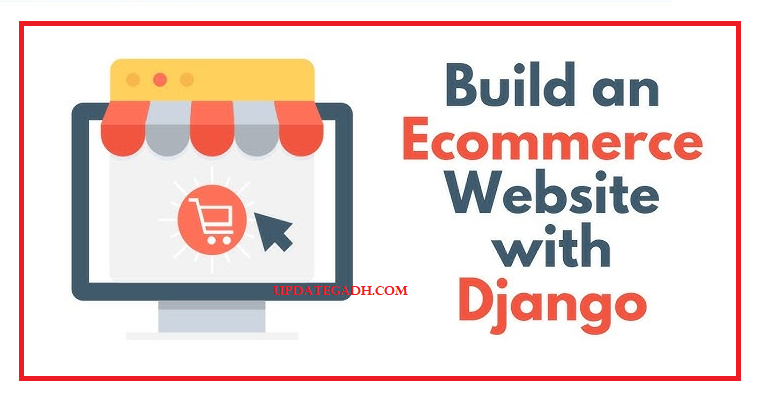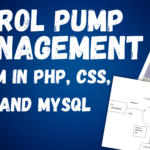E-commerce Website using Django
Introduction
Project: E-commerce Website using Django
This project is about creating a ‘E-commerce Website’ virtual website. It displays a list of the many things available for purchase in the store to the consumer. A shopping cart is supplied to the customer for the convenience of online shopping. Following the selection of the goods, the order is forwarded for confirmation. The system is built with Python’s web framework Django. Many technologies must be studied and understood in order to construct a Django e-commerce web application.
Check 100+ PHP Projects with Source Code
Table of Contents
Check : java Projects
About E-commerce Website using Django

Why Django?
Django, the high-level Python web framework, stands as the backbone of our digital odyssey. Its “batteries-included” philosophy equips us with a plethora of tools, allowing us to focus on crafting the unique features of our e-commerce platform rather than getting bogged down by mundane, repetitive tasks. From authentication to database management, Django has our back, ensuring that our journey is not only productive but also enjoyable.
The goal of this project is to create a virtual website known as a “e-commerce website.” It gives the user a list of all the different things that are sold in the store. The user is given a shopping cart for the ease of online shopping. The goods are chosen and then forwarded for the order confirmation procedure. The Django web framework for Python is used to implement the system. A thorough understanding of numerous technologies is required in order to construct a Django e-commerce web application.
Tools and Appropriate Knowledge Needed for the Project
- SQLLite, Django framework, and Python

Objective : E-commerce Website using Django
Project scope will be restricted to specific features of the e-commerce website. Products will be displayed, and users can choose catalogs, pick items, and remove items from their basket while indicating how much of each item they want to buy. A cart containing the chosen products will be gathered. The item on the card will be shown as an order at checkout. To finish an order, customers can pay for the products in their cart. There is a lot of potential for this idea. Moreover, the project offers security by encrypting user IDs and passwords to prevent unwanted individuals from accessing your account. The program can only be accessed by those who are authorized and have the necessary access authority.
- User Authentication:
- Implement a robust user authentication system to allow users to create accounts, log in, and manage their profiles.
- Include password recovery mechanisms and ensure secure storage of user credentials.
- Product Catalog:
- Create a comprehensive product catalog with categories and subcategories.
- Include product images, descriptions, prices, and stock availability.
- Shopping Cart:
- Develop a shopping cart system that allows users to add/remove products and update quantities easily.
- Ensure that the shopping cart retains items even after the user logs out and logs back in.
- Order Management:
- Implement an order processing system that enables users to place orders securely.
- Provide order confirmation emails and allow users to view their order history.
- Payment Gateway Integration:
- Integrate a secure payment gateway (e.g., Stripe, PayPal) to facilitate online transactions.
- Implement SSL to ensure secure data transmission during the payment process.
- Search and Filters:
- Incorporate a search functionality to allow users to quickly find products.
- Provide filters based on categories, price ranges, and other relevant attributes.
- Responsive Design:
- Ensure a responsive and mobile-friendly design for a seamless user experience across various devices.

- Admin Panel:
- Develop an admin panel to manage products, orders, and user accounts easily.
- Include functionalities for adding, updating, and deleting products.
- Security Measures:
- Implement measures to protect against common web vulnerabilities (e.g., Cross-Site Scripting, Cross-Site Request Forgery).
- Use HTTPS to secure data transmission, and sanitize user inputs to prevent SQL injection.
- Reviews and Ratings:
- Allow users to leave reviews and ratings for products.
- Display average ratings and sort products based on user feedback.
- User Notifications:
- Implement email notifications for order confirmations, shipment updates, and other relevant events.
- Provide in-site notifications for users regarding their account and orders.
- Performance Optimization:
- Optimize the website’s performance for faster load times.
- Implement caching mechanisms to reduce server load and enhance user experience.
- Social Media Integration:
- Include social media sharing options for products.
- Allow users to log in using their social media accounts.
- Analytics:
- Integrate analytics tools to track user behavior, monitor site traffic, and gather insights for business improvemen
How To Run The Project?
Python must be installed on your computer in order to execute this project. Once you’ve downloaded the project, take the following actions:
Step 1: Unzip or extract the file ,Navigate to the project folder
Step-2: Activate the environment and install requirements (windows) as shown below , open Terminal, and install the dependencies by running the following command if necessary:
python -m venv venv
.\venv\scripts\activate
python -m pip install -r requirements.txt Step 3: Run as shown below
..– Now enter following URL in Your Browser Installed On Your Pc :http://127.0.0.1:8000/
E-commerce Website using Django With Source Code is available for free download and use strictly for educational purposes! In addition, for the project demo, please see the video below:
Feature E-commerce Website using Django

1. Setting Up Your Django Project
Explain the initial steps of setting up a Django project for your e-commerce website, including creating a virtual environment, installing Django, and setting up the project structure.
2. Database Models and ORM
Discuss the design of your database models using Django’s Object-Relational Mapping (ORM) to represent products, categories, users, and orders. Explain the relationships between these models to establish a solid foundation for your e-commerce platform.
3. Creating a User Authentication System
Implement a secure user authentication system to handle user registration, login, and password recovery. Discuss the importance of securing user data and transactions in an e-commerce environment.
4. Product Management
Detail the process of adding, editing, and deleting products through Django’s admin interface. Showcase the simplicity of managing products and their details using Django’s built-in features.
5. Shopping Cart Functionality
Guide readers through the implementation of a shopping cart using Django sessions or models. Explain how to add products to the cart, update quantities, and remove items, making the shopping experience seamless for users.
6. Checkout Process
Describe the steps involved in the checkout process, including address input, shipping options, and payment integration. Introduce popular payment gateways like Stripe or PayPal and demonstrate how to integrate them into your Django project.
7. Order Management
Discuss how to manage orders, track order status, and send confirmation emails to customers. Highlight the importance of order history for users and administrators.
8. Implementing Search and Filters
Explain how to integrate search functionality and filters to help users find products easily. Discuss the implementation of features like autocomplete for search queries and sorting options.
Advantage E-commerce Website using Django
Creating a complete e-commerce website involves a significant amount of coding and design work, which is beyond the scope of a simple text-based interaction. However, I can provide you with a basic outline of the features and components you might want to include in your advantage e-commerce website:
User-friendly Design:
- Intuitive and responsive design for seamless navigation.
- Mobile optimization for users on smartphones and tablets.
Product Catalog:
- Clearly organized categories and subcategories.
- High-quality images and detailed product descriptions.
- Advanced search and filtering options.
Shopping Cart:
- Easy-to-use and prominent shopping cart.
- Ability to view and edit cart contents before checkout.
User Accounts:
- User registration and login functionality.
- Customer profiles with order history and tracking.
Checkout Process:
- Streamlined and simple checkout process.
- Multiple payment options (credit card, PayPal, etc.).
- Secure and encrypted transactions.
Product Reviews and Ratings:
- Allow customers to leave reviews and ratings for products.
- Build trust and credibility through user-generated content.
Security Measures:
- SSL encryption for secure data transmission.
- Secure storage of customer information.
- Regular security audits and updates.
Note: Only for Educational Purpose
Outputs:-

Before Download This Project Please Check Complete Demo Video
📝 Scroll down and click the download button to get the Movie Recommendation With Source Code project.
E-commerce Website using Django : Click the Download Button Below

Download Project :-Click Here
Tags :-
- e-commerce website using django
- simple e-commerce website using django github
- e-commerce website using django source code
- e-commerce website using django rest framework
- e commerce website using django project report
- e commerce website using django
- e-commerce website with django and python
- build an e-commerce website with django and react
- ecommerce website examples
- django e-commerce
- e-commerce website django
- django e-commerce website
- e-commerce website in django full tutorial
- e commerce website using django github
- e commerce website using django project github
- django e-commerce tutorial
- django ecommerce
- django ecommerce framework
- django e-commerce open source















